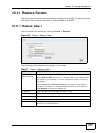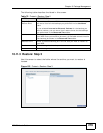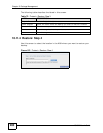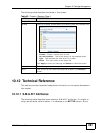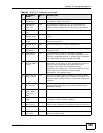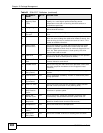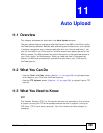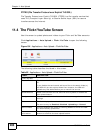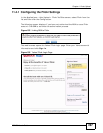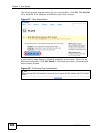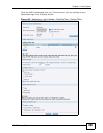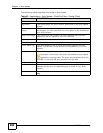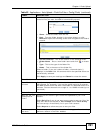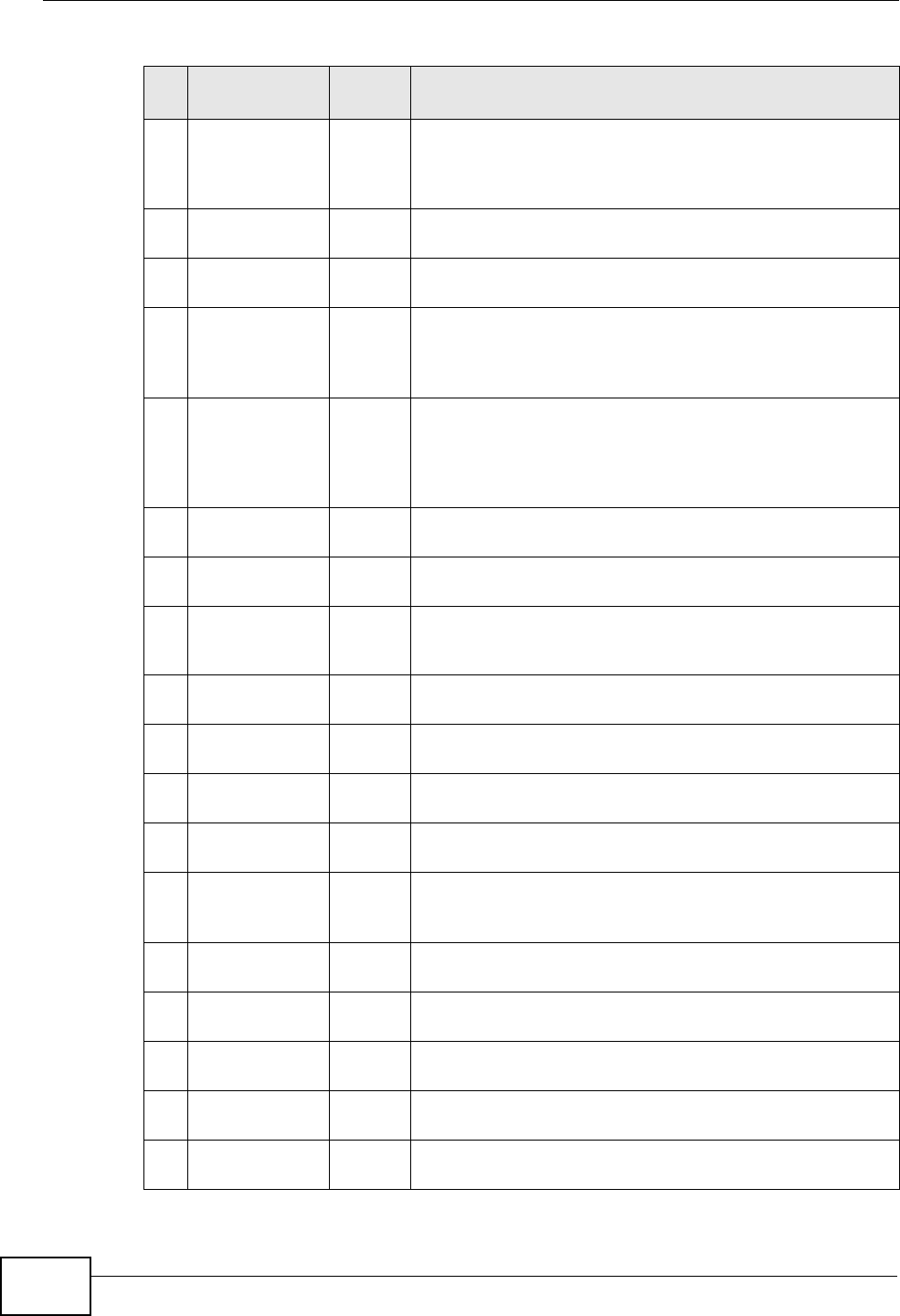
Chapter 10 Package Management
NSA320 User’s Guide
284
20
5
Thermal
Asperity Rate
(TAR)
Low This is the number of thermal asperity errors. Thermal
asperity is a read signal spike caused by sensor
temperature rise due to touching the disk surface or
contaminant particles.
20
6
Flying Height This is the height of the hard drive’s read/write heads
above the disk surface.
20
7
Spin High
Current
This is the quantity of high current used to spin up the
drive.
20
8
Spin Buzz This is the number of buzz routines to spin up the drive.
When the arm holding the read/write heads is stuck, the
motor driving it tries to oscillate the arm to free it. This
causes an audible vibration.
20
9
Offline Seek
Performance
This is the hard drive’s seek performance during offline
operations. Offline operations are tests the drive does
itself as opposed to those that an external diagnostic tool
has it do. Seek performance is how quickly the drive
moves from track to track.
22
0
Disk Shift Low This is how far the disk has moved relative to the spindle
(this kind of shift is usually due to shock).
22
1
G-Sense Error
Rate
Low This is the number of errors that have resulted from
external vibration and shock.
22
2
Loaded Hours This is how long the hard drive has operated under data
load (this requires movement of the magnetic head
armature).
22
3
Load/Unload
Retry Count
This is how many time the magnetic head has changed
position.
22
4
Load Friction Low This is resistance caused by friction in mechanical parts
during operation.
22
5
Load/Unload
Cycle Count
Low This is the total number of load cycles.
22
6
Load 'In'-time This is the total time that the magnetic heads actuator
has had a load (not been in the parking area).
22
7
Torque
Amplification
Count
Low This is the number of attempts to compensate for
variations in platter speed.
22
8
Power-Off
Retract Cycle
Low This is how many times the magnetic armature was
automatically retracted because the power was cut.
23
0
GMR Head
Amplitude
This is the amplitude of thrashing (or the distance of
repetitive forward and reverse head motion).
23
1
Temperature Low This is the hard drive’s temperature.
24
0
Head Flying
Hours
This is the total time that the head has been positioning.
25
0
Read Error
Retry Rate
Low This is the number of errors in reading from the disk.
Table 81 S.M.A.R.T. Attributes (continued)
ID
ATTRIBUTE
NAME
BETTE
R
DESCRIPTION




